What is better, Fiber Laser Marking Machines or CO2? This topic has been discussed in the manufacturing community for many years. Because laser purists insist that CO2 is the better technology, while others are pushing for new innovations in Fiber Laser Marking Machines that insist on the exact opposite. Who is right? Which technology is superior?
The answer lies in the fact that many manufacturers offer both fiber laser and CO2 technology in their mechanical product lines. This is because there are significant differences in technology and capabilities, as well as their performance in specific materials, thicknesses, and applications. It all comes down to what type of material you want to be cut.
In a previous article, we found that fiber laser cutters get more power to the cutting head from the resonator or power supply. This is done by not needing to reflect the beam off of a mirror and then refocus it through many lenses. The beam remains focused at the source. The advantages of CO2 lasers are their flexibility and material type.
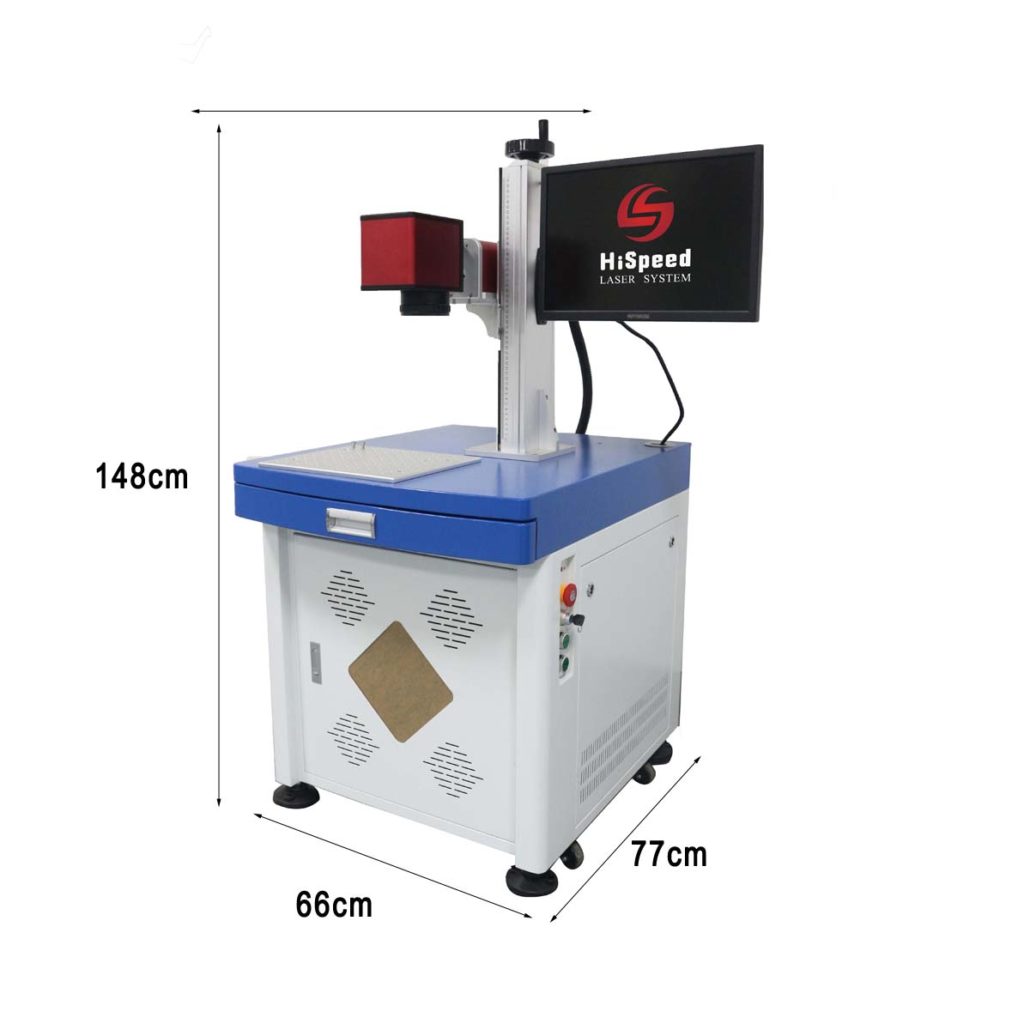
What is a Fiber Laser Marking Machine?
A Fiber laser is simply the term for the fiber optic delivery system that delivers an intense and amplified beam of light to the cutting head on a laser machine. This term doesn’t describe the process of creating the light source (which is different than a CO2 resonance). Fiber optic beam delivery has made manufacturing lasers much easier and many machines are now available at very low prices.
How does a Fiber Laser Marking Machine work?
The fiber optic takes the light source from the laser cutting machine’s resonant cavity and transmits it to its CNC-controlled cutting head. The laser is focused through a series of lenses onto the material surface by the cutting head. It emits from the end the fiber optic cable.

What is a CO2 laser?
The actual method of creating a CO2 laser is the process. A resonator blown at high speed with CO2 gas (turbine, blower) uses a variety o split the ions light particles (usually RF excitation or DC excitation). This causes the light particles to collide and then split at greater intervals.
How does a CO2 laser work?
CO2 vs Fiber Lasers: Advantages and Disadvantages of Each
Fiber laser engraver technology is a monolithic, fiber to fiber, a compact solid-state configuration that cuts flat metal. This is the main advantage. Fiber laser has lower operating costs than comparable CO2 lasers. The characteristics of the fiber laser beam provide faster cutting speeds than the CO2. Fiber laser cutting systems are capable of cutting more than one inch using a higher power fiber laser and even faster when nitrogen was used as an auxiliary gas.
However, the best place to achieve the greatest advantage over CO2 systems is the 1/2-inch and below range. It is clear that fiber laser technology is the most efficient and cost-effective way to work with stainless steel, copper, aluminum, brass, or copper. If you are cutting wood, acrylic, or leather, this technology is also available. It is recommended that you use a CO2 laser.
Advantages CO2 lasers
- Surface finish: CO2 lasers typically produce better edge quality on stainless steel and aluminum workplaces.
- Flexibility: CO2 lasers offer flexibility for a range of laser applications, including non-metals.
- Known technology: Because CO2 laser technology has been around for more than 30 years, the results are completely predictable.This provides a good level of assurance for the user.
Disadvantages CO2 lasers
- Operating expenses: The CO2 laser cost of mirrors, bellows, and laser gas required to maintain the beam path delivery system clean and pure is 70% more than the power consumed by CO2 resonators and blowers.
- Maintenance: The beam path delivery system requires maintenance. This is disruptive for manufacturing and very expensive.
- Speed: CO2 lasers are not able to compete with fiber optics in thin materials. For example, the recommended cut speed for a 4KW CO2 in 16 GA mild steel using N2 as the cutting gas is only 260 IPM, compared to about 1,417 IPM for the same equipped fiber laser, a significant difference.
Advantage Fiber Laser
- Investment Cost: The price of solid-state laser technology is falling as it becomes more popular. Fully equipped domestic fiber laser cutting machines can be bought starting at $300K
- Maintenance: The absence of beam path delivery systems and their extensive use of mirrors, bellows, and gas-wetted fiber lasers (especially the solid-state resonator types) greatly reduces the amount of maintenance required and the costs associated with maintenance.
- Speed: In the competition between fiber lasers and CO2 lasers for thin materials, there is simply no comparison. Fibers are twice to three times faster than gauge materials.
- Operating costs: Fiber lasers require about 1/3 the power consumption of their CO2 counterparts due to the lower power requirements and cooling requirements of the resonators. This, along with faster cutting and less maintenance, makes fiber lasers very cost-effective.
Disadvantages Fiber Lasers
- Treatment of thick materials: The advantage of CO2 lasers for surface treatment is their ability to treat thicker materials, such as stainless steel and aluminum. Although fiber laser technology may be a distant future, CO2 remains the market leader in the field.
- Overall flexibility: The CO2 Laser is more flexible than other lasers, and can cut a greater variety of materials, particularly non-metals. Fiber-optic technologies can cut brass and copper straight out of the box (CO2 Lasers had great difficulty with these materials), but they are still limited in their use, particularly for non-metallic applications.
- Technology/comfort level: If there are CO2 laser systems at your facility, it is possible that you initially see this technology as the “devil you know” and not the “devil you don’t.”
What Materials Can CO2 Lasers and Fiber Lasers Cut?
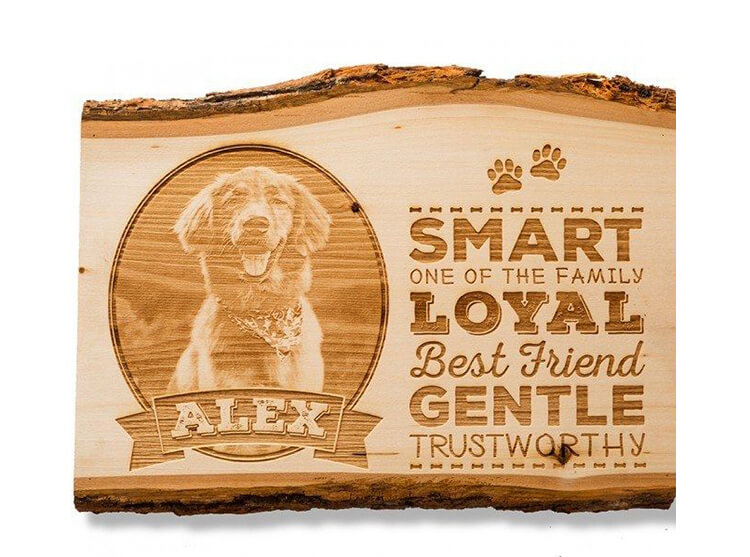
CO2 lasers engraving products
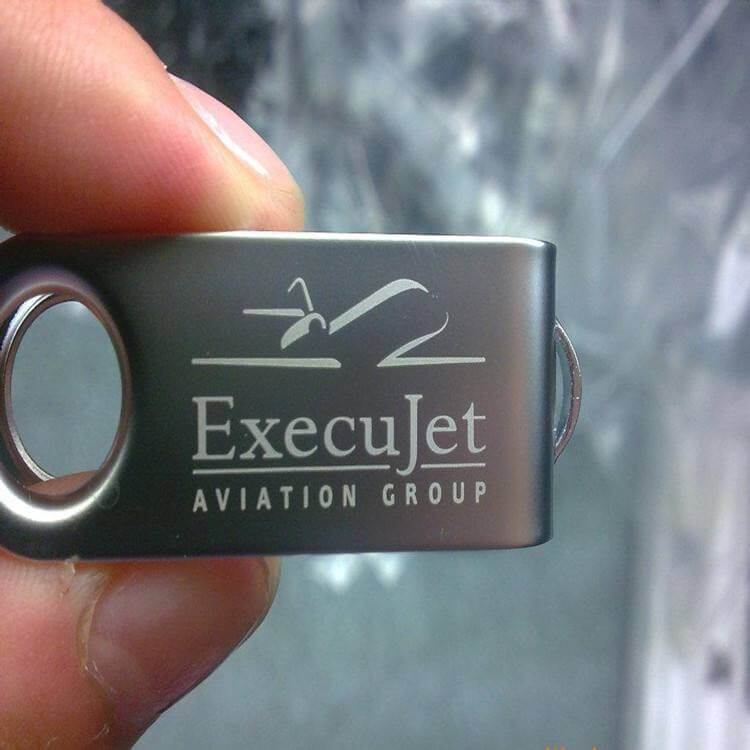
Fiber lasers engraving products
The advantage of CO2 lasers is that they can work with a wide range of materials. They can use with organic materials (non-metals). Organic materials are things like wood, acrylic, plastic, rubber, leather, and anything like that. Fiber lasers are mainly used with metals.
However, CO2 lasers cannot use with a variety of metals. That’s because some metals are by nature highly reflective. By reflective nature, I mean that these metals are able to reflect (reflex) light/laser. It’s like pointing a flashlight at a mirror and the light will reflect back at you. Metals such as aluminum, copper, gold, brass, and silver are highly reflective. If the light is reflected back into a laser machine, it can damage it and CO2 laser cost thousands of dollars to fix! So make sure you triple check that the laser machine you buy can work with the material you need without causing any damage. CO2 laser machines have a laser beam that is easily reflected back by highly reflective metals. Fiber lasers have a much lower frequency laser beam.
(In fact, almost all metals are by nature reflective. It’s just that some metals are more reflective than others.)
The shorter wavelengths of fiber lasers may work well with a variety of metals, but not with organic/non-metallic materials. CO2 machines can also use on organic materials like wood and plastic. A fiber laser engraver can cause a fire if it does use on wood. If it is to use on plastic, it can melt it.
A CO2 laser can work with metal as long as it has enough power (watts). You need about 25-150 watts to engrave something like steel and about 300 watts to cut it. CO2 lasers also need to use oxygen as a carrier to cut these metals. Note that it takes less power (wattage) to engrave/mark material than it does to cut it.
I have listed a few materials that can be used in combination with fiber lasers and CO2. I strongly recommend that you double/triple check online and with the business you are buying from that the laser machine you are buying is compatible with the material you want to cut.
Materials CO2 laser cutters can use with.
- Wood
- Acrylic fiber
- Brick
- Fabric
- Delrin
- Cloth
- Leather
- Marble
- Matte board
- Melamine
- Paper
- Polyester film
- Pressboard
- Rubber
- Wood veneer
- Glass fiber
- Painted metal
- Tile
- Plastic
- Cork
- Corian
- Anodized aluminum
Material fiber lasers are available.
- Aluminum
- Tungsten
- Carbide
- Non-semiconductor ceramics
- Chrome alloys
- Painted metal
- Glass Fiber
- Carbon Fibers
- Nickel
- Plastic
- Polymers
- Rubber
- Silver
- Gold
- Stainless steel
What are the Purchase and Operating Costs?

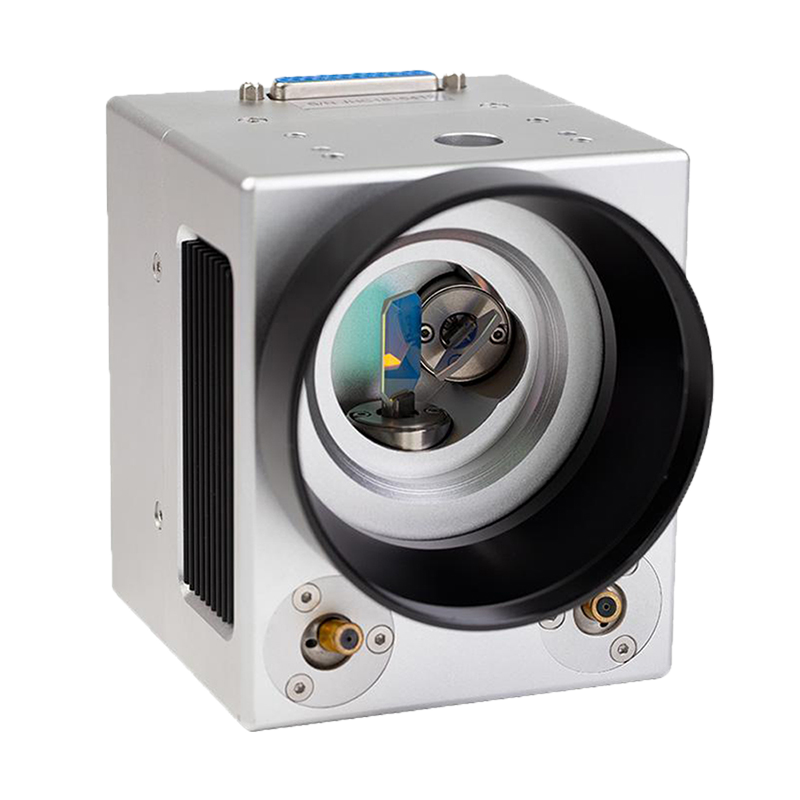
When purchasing a laser machine, you need to know the total cost of ownership to see if you are making a wise investment. Total cost of ownership means the cost of the laser machine when you purchase it and the cost of operating and maintaining/repairing it over time.
Today, the initial/upfront cost of a fiber laser is higher than that of a CO2 laser. High-end fiber lasers typically start at $40,000. High-end CO2 machines typically start at $10,000. In general, fiber lasers are likely to cost more than CO2 machines with the same statistics and features (e.g., power (watts), size, speed, etc.).
The initial or up-front cost of a laser machine is only one part of the equation. It is important to also consider the costs of maintaining, operating, and repairing the laser machines. Some people make the mistake of looking at the initial price of the laser machine and forgetting to calculate the operating costs. Maintain and repair laser machines over time. Don’t make this mistake, especially if you are going to use the laser machine regularly.
Calculating the total cost of ownership
Typically, the overall cost of a CO2 laser is higher than that of a fiber laser over time. Here are some things to consider when calculating the total cost of a laser.
- Consumables: CO2 lasers require a gas (such as oxygen or nitrogen) to operate, whereas fiber lasers do not. (Fiber lasers can use gas for better cut quality).
- Power Consumption: Fiber laser cutters consume about three times as much energy as CO2 lasers. This basically means that the fiber laser uses 3 times less power to cut the same thing.
- Parts maintenance/cleaning: CO2 lasers have parts such as mirrors, turbines and water tanks that need to be cleaned and repaired. If not, they can break down and cost you money in repairs. Therefore, make sure you remember to pay attention to the needs of your laser machine. It can save you a lot of money in the long run.
- Repair: CO2 laser parts are more likely to fail than fiber laser parts. It is estimated that it takes about 50,000 to 100,000 hours for a fiber laser machine to fail, while CO2 takes about 20,000 hours. Fiber laser cutters are what you would call solid-state machines (almost all in one piece). This means that they have no moving parts. Therefore, the likelihood of failure or non-functional operation is much lower.
- Lifespan: Every machine will eventually break down …… Generally speaking, high-end CO2 laser machines last about 10-15 years. Fibers can last twice as long if not more than three times as long.
Remember to keep these points in mind when trying to calculate the cost of the type of laser machine you will choose. If you don’t cut materials often and need to cut non-metallic materials such as wood or acrylic, then a CO2 machine would be your best choice. If you need to cut a lot of metal, especially thin metal, then a fiber laser may be the best choice for you.
Another thing to remember that will work in your laser machine. That’s time. You know what they say, time is money. How fast your laser machine operates can make a huge difference in the value of your investment.
Cutting Speed – How fast is your laser cutting?
Cutting quality – How smooth do you want your edges to be?
One of the advantages of CO2 lasers for cutting is that their cutting edge quality (sharpness/finer edges) is consistent across the entire thickness range of the material. This means that you don’t need to worry about your edges looking bad when cutting thin or thick material. The fiber laser becomes less efficient at making consistent cuts as the material becomes thicker.
Keep in mind that fiber laser engravers are getting better as time goes on. Today, the quality of cuts in thickness is not as bad as it was in the early days of fiber lasers. If you really want to get into fiber laser cutters but are concerned about cut quality, you should have the company you buy from the show you a demo. At Morphy, that’s what we do. Anyone local, we’ll let them walk in so we can cut out the samples they might need. Our customers can be confident that their machines will cut the product they require.
Points to consider when purchasing a CO2 VS Fiber Laser machine.
- Based on data I found online, the average price of a 4kW laser cutter costs $12.73/hr CO2 laser per day. The average cost of a 4kW fiber laser cutter is $6.24/hr.
- The main uses of fiber laser machines are cutting thin metals (0-5mm) and marking, engraving, annealing, etching, and even welding metals.
- CO2 lasers can use cut, mark, and engrave a wide range of non-metallic materials such as plastics, textiles, and stones.
- Fiber laser machines take up less space than CO2 laser machines. co 2 laser machines require gas tanks, pumps and piping. In contrast, fiber optic machines are much more compact.
